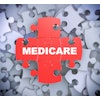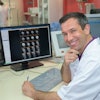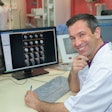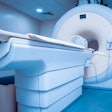
Should the primary duty of radiologists shift from interpreting images to preventing unnecessary orders for medical imaging? That's just one of several novel suggestions for reducing radiology overuse in a Viewpoint article published online January 7 in the Journal of the American Medical Association.
Despite efforts such as Choosing Wisely, the overuse of medical imaging remains a major problem in the U.S., contributing to higher healthcare costs and negative health consequences, according to the authors. Incidental findings, or radiographic findings that were not the original reason for a test being performed, are a particularly thorny problem, wrote the team led by Dr. Ohad Oren of the Mayo Clinic in Rochester, MN (JAMA, January 7, 2019).
The authors review several of the strategies that have been used to reduce imaging overuse, such as providing targeted education in medical school and having referring physicians use appropriate use criteria when ordering exams. However, these interventions have only produced modest results, and few have been proved through randomized controlled trials, they noted.
Another strategy in vogue is shared decision-making, in which physicians and patients discuss the benefits versus the detrimental effects of a test -- effects that could include the detection of unrelated findings. But, ironically, such sessions could actually lead to increased testing if physicians present patients with all of their diagnostic options, Oren and colleagues wrote.
The authors therefore recommend other types of interventions, in particular those that address both physicians and patients.
One suggestion involves increasing the cost of low-value imaging "significantly" to result in higher out-of-pocket costs for patients. Some scans could even be prohibited outright, such as brain MRI scans for patients with stable chronic migraine headache.
Another strategy is to mask images so that the "quality and focus of the image are adjusted to the level of clinical suspicion." They offer the example of a chest CT scan for pulmonary embolism that might be altered to reserve high resolution for pulmonary vessels but only medium resolution for skeletal and breast tissue. "As a result, pulmonary nodules, abnormal marrow signals, and breast irregularities will be less likely to be detected," they wrote.
Finally, the authors noted that with the arrival of artificial intelligence and improvements in the "automated reading of images, radiologists will be needed less to interpret some imaging tests," making them available to manage imaging use more aggressively. In this scenario, radiologists could be used more as clinical consultants in patient encounters where the use of an imaging test is being contemplated.
"Instead of training radiologists primarily to read images, they may need to be trained as gatekeepers who mostly regulate or are consulted about what tests should be ordered and, even more so, which ones should not be ordered," they wrote.



















